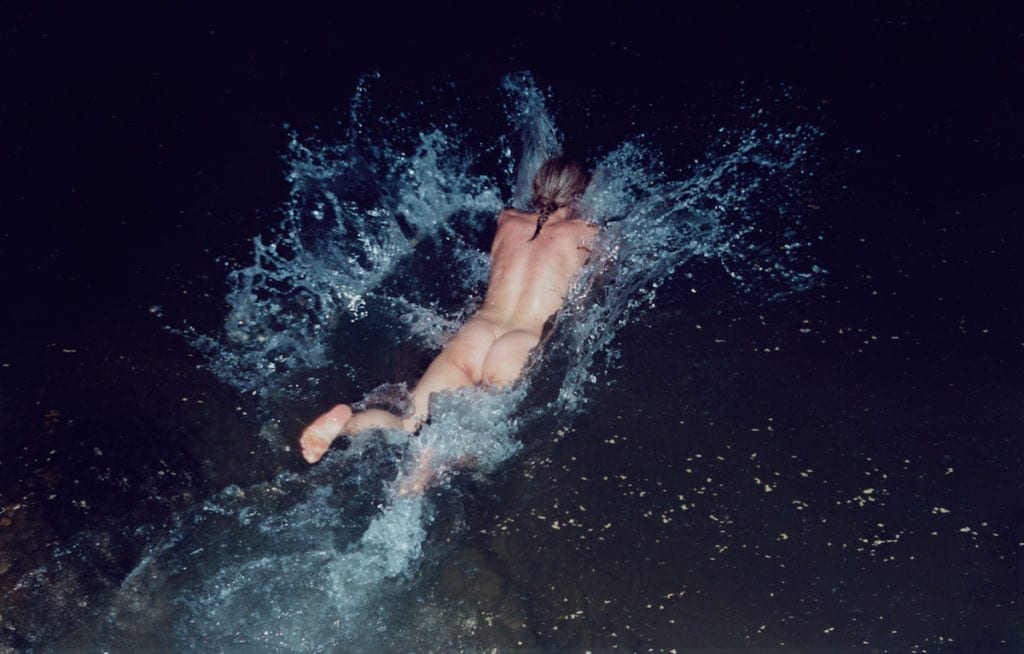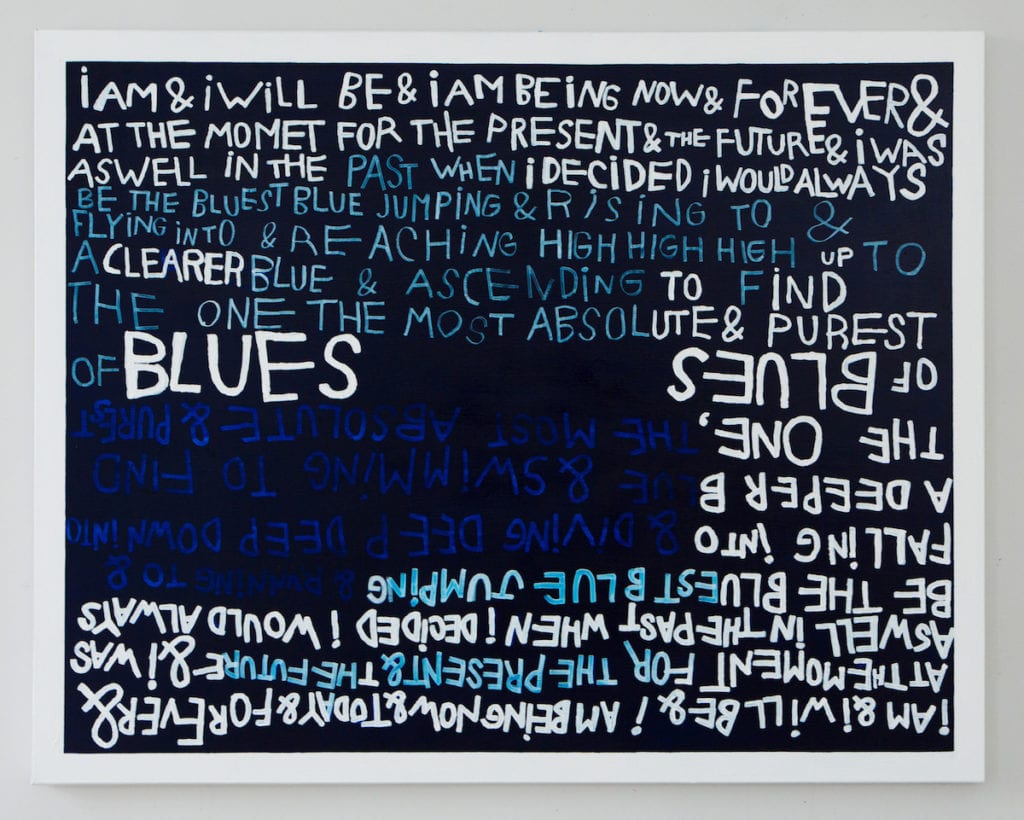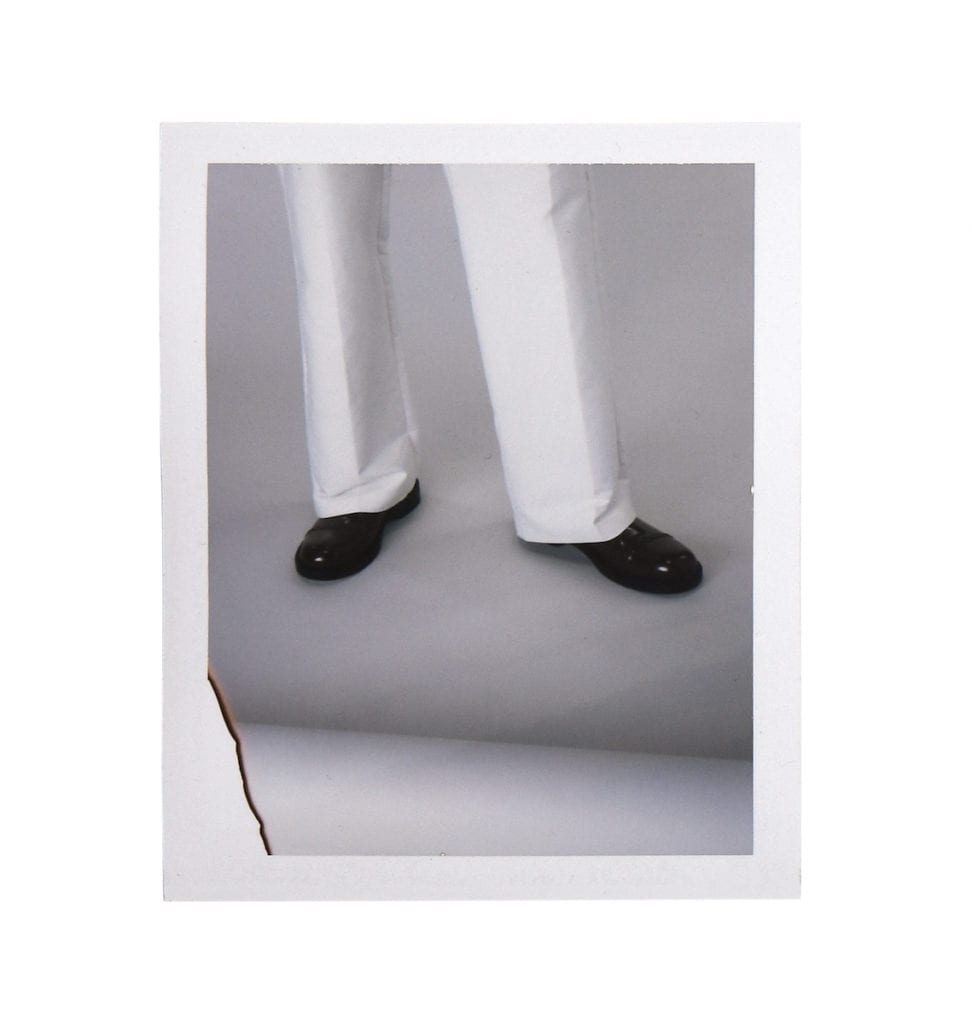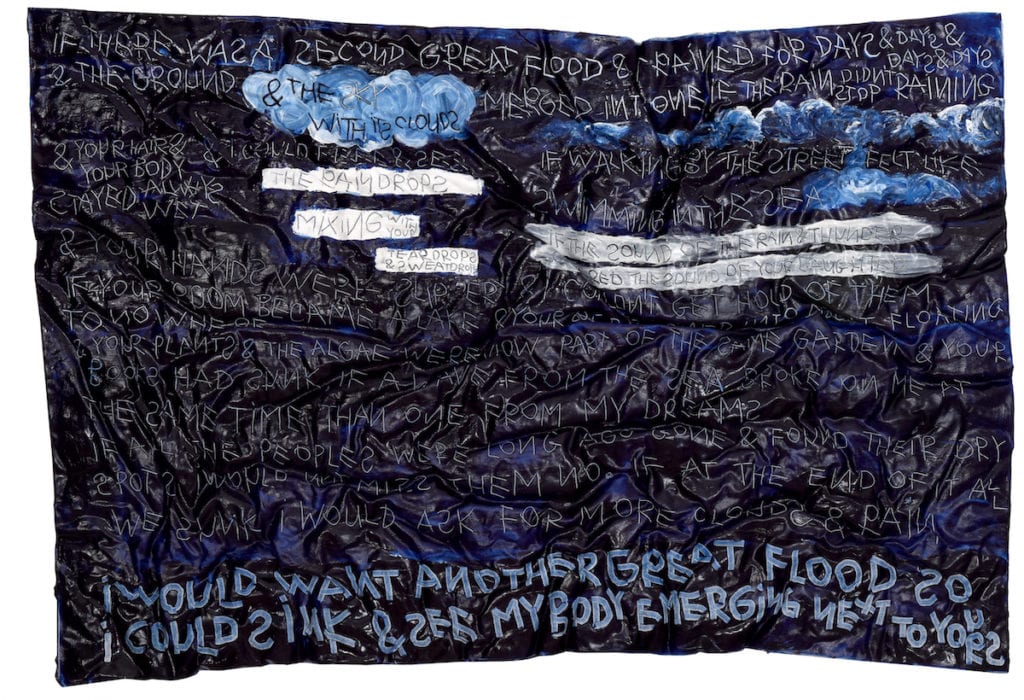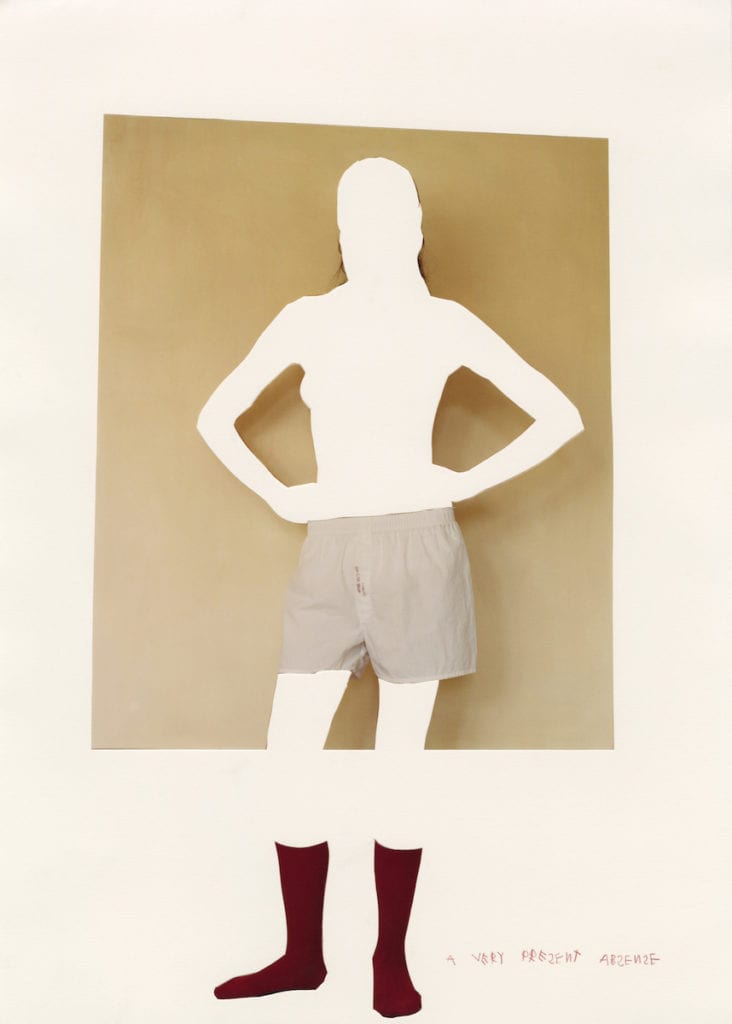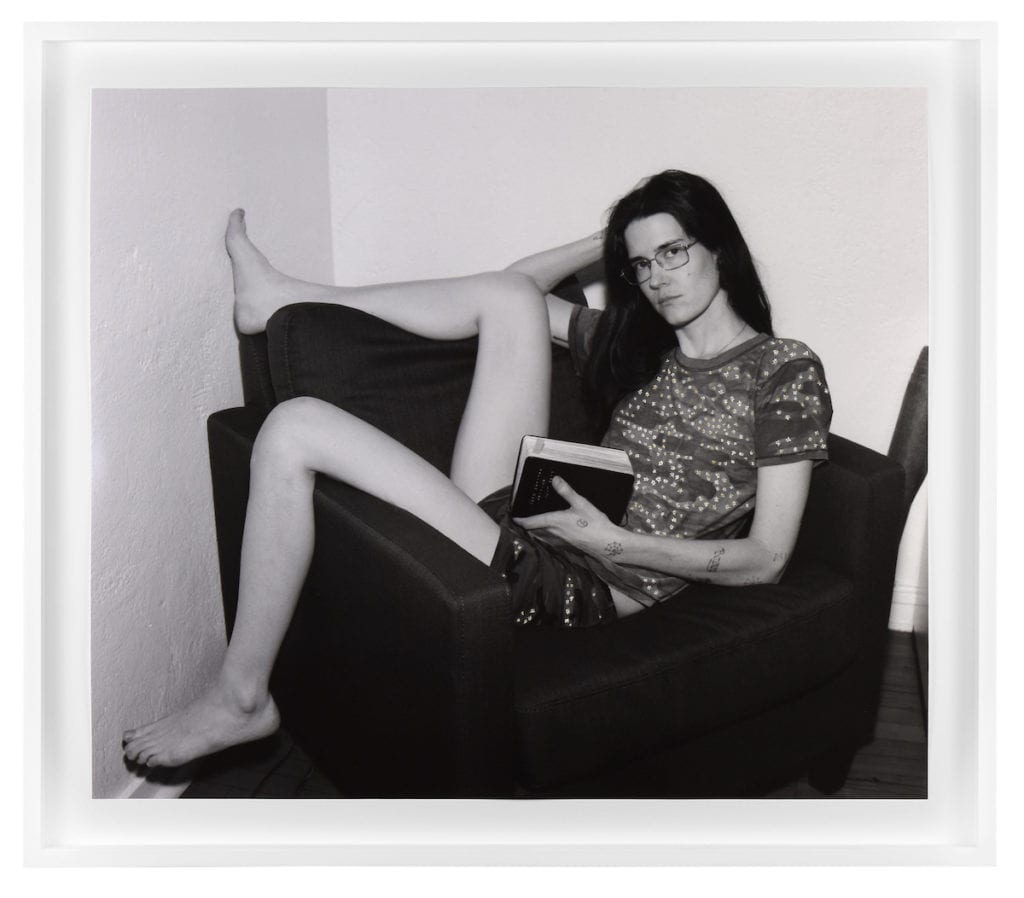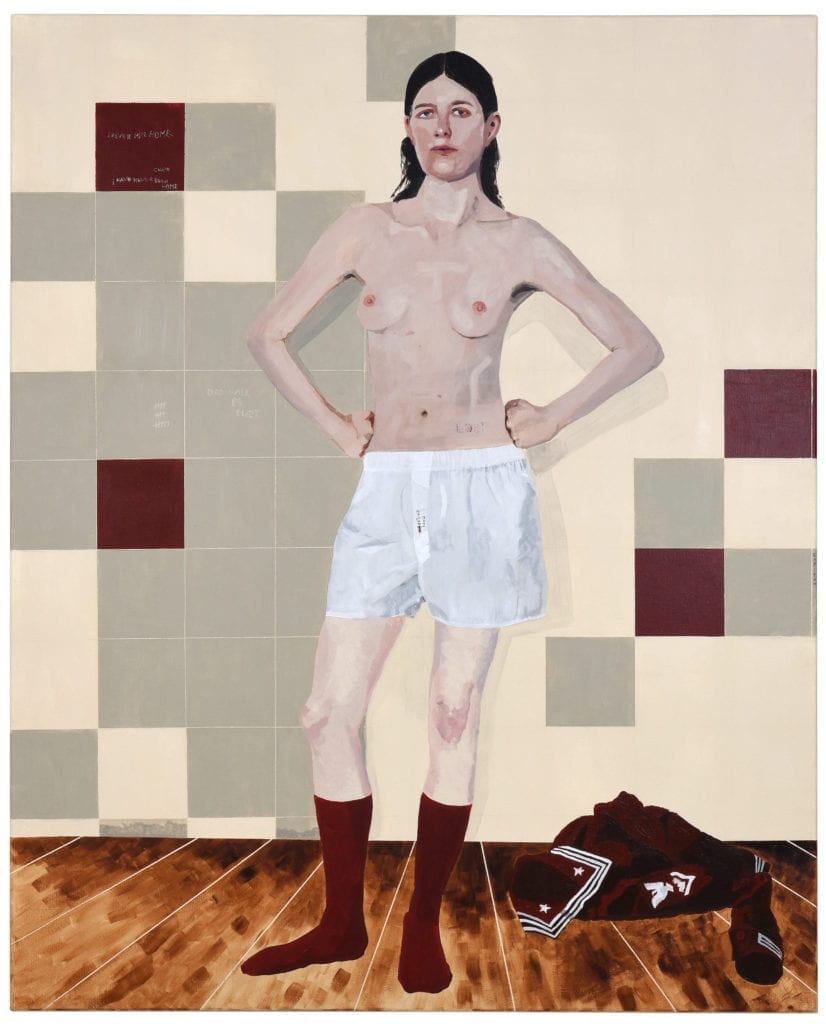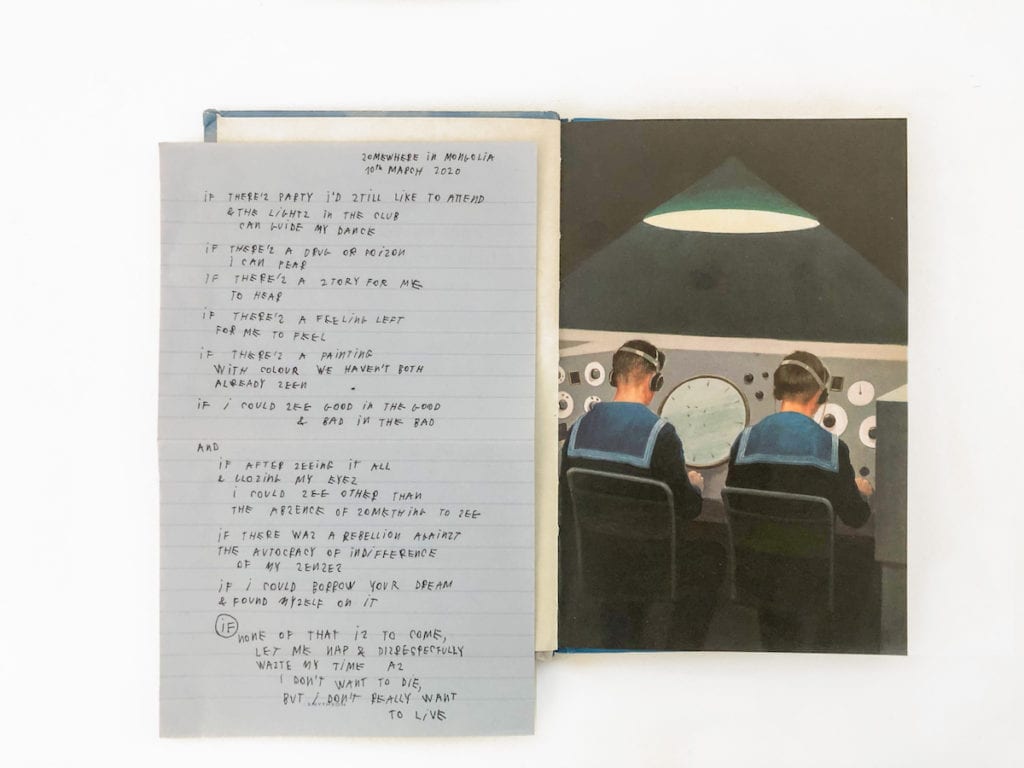Over one billion cubic kilometres of water envelop the earth: stretches of deep blue gilded in crashing waves and snaking currents. Miles of silence curling around continents and extending outwards, over horizons and beyond. A landscape of calm, but also chaos: uncharted waters, stormy skies, and the ultimate unknown spiralling down up to 10,994 meters below. And it is here, in the ocean, surrounded by salty sea and swathes of the sky, that Coco Capitán intends to disappear; to melt into the uncharted: “The margin of the rest of existence”. But, not alone. Capitán will voyage with a collective, a reimagined Navy of sorts “in which everyone [is] lost and [can] celebrate this uncertainty,” as reads the opening text of her new exhibition Naïvy, penned in her characteristic scrawl.
Capitán’s “Lost Naïvy“, as she describes it, is fantastical; far-removed from the military: regimented, disciplinary, homogenous. In the Lost Naïvy, identity is fluid, groupthink disappears, and although the collective sails together, each member is distinct. It is something Capitán conceived from her want — a desire to transcend society’s strictures: “I wanted to form a collective, which could exist outside the rules of convention; a collective of people as lost as myself”.
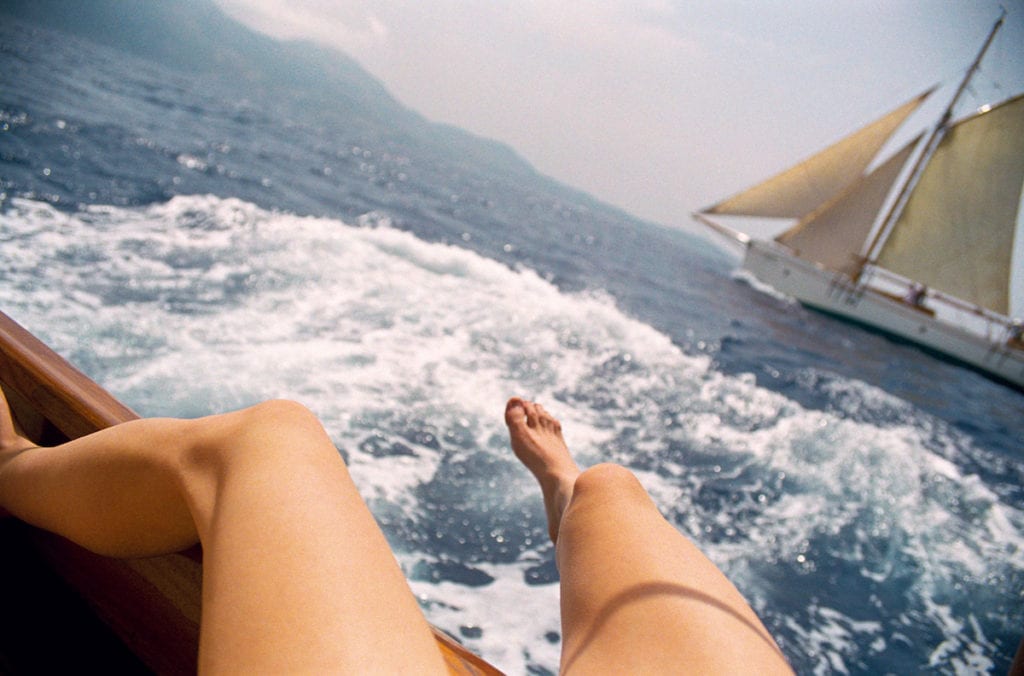
“When I speak about the possibility of being free and being oneself, I mean the possibility of being whoever you want to be outside of that pressure”
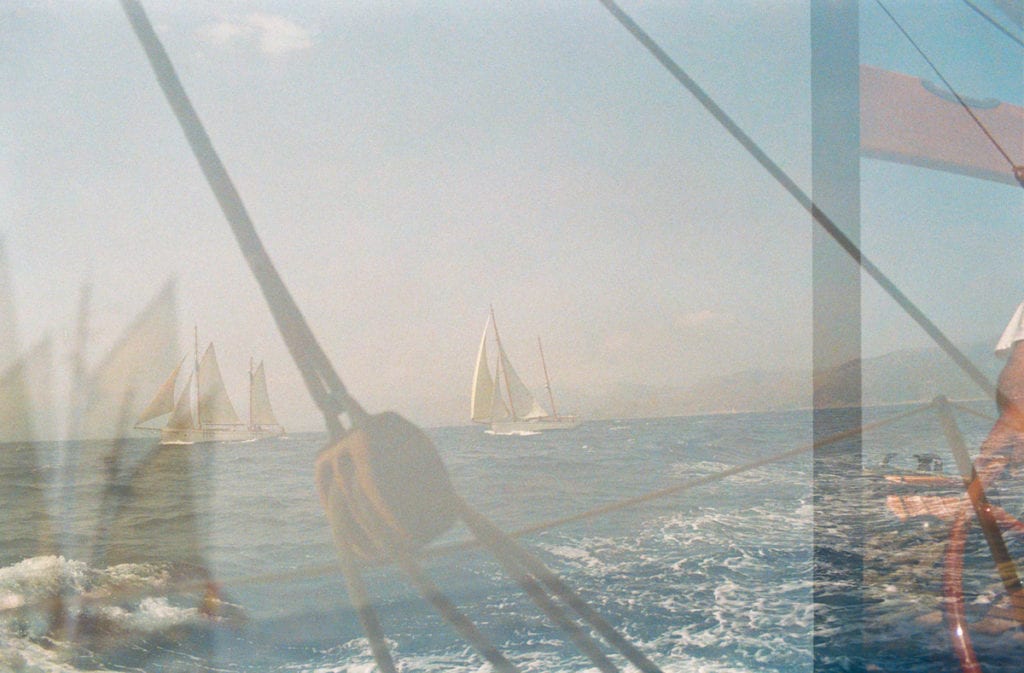
The Lost Naïvy comes alive in a collection of works; some are new, some are old, and as is characteristic for the multimedia artist, the selection spans multiple mediums: photographs sit alongside paintings, ephemera next to handwritten texts. Blue — bright, burning blue — loops everything together: swirling seas, thick paint, and the sailor suit embellished with embroidery, acrylics, and words — artistic interventions, which introduce variation into an archetypal uniform, creating a re-envisioned version, for the Lost Naïvy, of the sailor shirt. “Many of the series’ characters wear the American Navy uniform of World War II, but, here, it is always modified” describes Capitán. “There is always some addition, which symbolises the differences between people even among a uniformed group.”
Visually, Capitán’s crew is the antithesis of the conventional Navy: “They are cute girls, or skinny boys, far-removed from the image of a traditional male sailor”. In a New Kind of Freedom, an androgynous figure plunges into what could be a dimly-lit pool. While in A blue dream within a dream an individual can be seen curled up, sleeping, their brown hair tumbling down a navy velvet bedspread, their body enveloped in a knitted sailor-style shirt. “We all have different pressures that come from different places,” continues Capitán. “I don’t think we are free to be what we are. When I speak about the possibility of being free and being oneself, I mean the possibility of being whoever you want to be outside of that pressure.”
The sense of freedom, escape, and the unknown, which moves through the show is poignant at this moment; a year in which the world seems to contract and expand at once. Countries worldwide shift in and out of lockdown as the pandemic rages on, while politics, society, and the environment implode into uncharted realms. Meanwhile, Capitán’s Lost Naïvy moves through the sea adrift, reimagining the world. The sea is not a place to conquer; it has become a space to escape.
Coco Capitán: Naïvy is on view at Maximillian William, London from 11 September to 30 October 2020.
